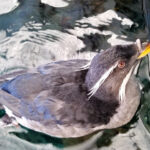Generally, the answer to whether wasps fly at night is no. While spotting a wasp in flight after dusk isn’t entirely impossible, it’s certainly not typical behavior. Wasps are overwhelmingly daytime creatures, but understanding their activity patterns at night involves more than a simple yes or no. Let’s delve into the nocturnal habits of these stinging insects.
Wasp Nighttime Inactivity: More Rest Than Sleep
It’s a common question whether wasps sleep, but the reality is more nuanced. Wasps do not sleep in the way mammals do. They lack eyelids and the complex central nervous system that dictates mammalian sleep cycles. However, wasps definitely experience periods of inactivity, most notably during nighttime hours when they rest. During this rest, a wasp becomes largely immobile and less responsive, conserving energy until daylight returns. While seemingly dormant, they remain alert to immediate dangers and can react if disturbed.
Nighttime Nesting Habits: Where Do Wasps Go When Darkness Falls?
As daylight fades, wasps instinctively return to their nests for the night. For many species, these nests are remarkably constructed in sheltered locations. Some wasps build nests in underground burrows, offering significant protection from nocturnal predators and the elements. Others create nests in trees, within walls, or under eaves. Regardless of the specific location, the nest serves as a secure nighttime refuge for the wasp colony, a place where they remain largely undisturbed until the sun rises again.
Wasp Vision in Low Light: Limited Nocturnal Sight
Unlike creatures of the night, wasps are not equipped with true night vision. Their compound eyes are exceptionally well-suited for detecting movement and intricate patterns in daylight, which is crucial for foraging and navigation. However, when light levels diminish, such as at dusk or dawn, their visual acuity is significantly reduced compared to their daytime capabilities. Consequently, during the darkness of night, wasps rely less on sight and more on other senses and ingrained instincts to navigate within their nests and remain sheltered.
Light Attraction and Wasps: A Daytime Sensation
While not as dramatically drawn to light as moths or some other nocturnal insects, wasps can still be attracted to light, particularly if it signals a potential food source. This attraction is less pronounced at night when they are generally inactive, but artificial lights can sometimes disrupt their natural behaviors. If outdoor lights are positioned near wasp nests or areas where wasps forage during the day, they might investigate if the light source coincides with insects drawn to the light, thus presenting a possible meal.
Peak Wasp Activity Hours: Embracing the Daylight
Wasps are unequivocally diurnal insects, meaning their peak activity occurs during the daytime. They thrive in the warmth and brightness of daylight hours. Here’s a breakdown of their activity throughout the day:
- Morning: As temperatures climb after sunrise, wasps become increasingly active. This is a prime time for foraging for food – nectar, insects, or materials for nest building – and for general nest maintenance activities.
- Afternoon: Wasps maintain a high activity level throughout the afternoon. They continue foraging, tending to their nests, and caring for their young. The warm afternoon temperatures are ideal for their energetic pursuits.
- Early Evening: As evening approaches, wasp activity begins to taper off. Some species may exhibit a brief surge of activity as they return to their nests for the night, while others simply become less active as they prepare for their nighttime rest period.
Professional Wasp Management Services
Protecting your family and pets from stinging insects like wasps is a priority. At A-Action Pest Control, we offer effective solutions with our Power Spray Treatment, available starting in spring. Our experienced exterminators provide convenient scheduling, often with same-day service, giving you peace of mind and a wasp-free environment.
